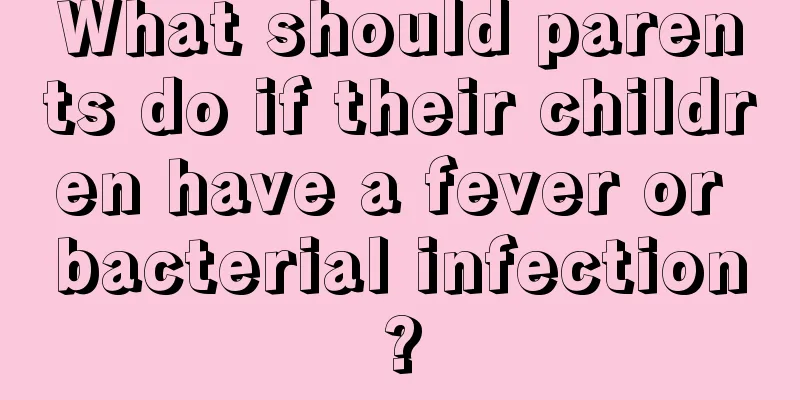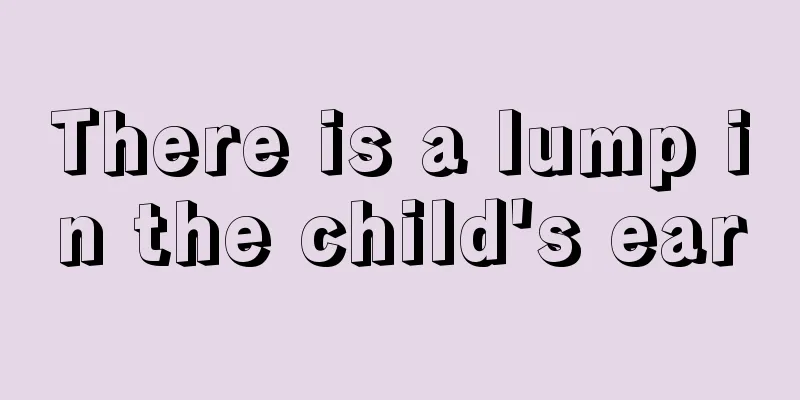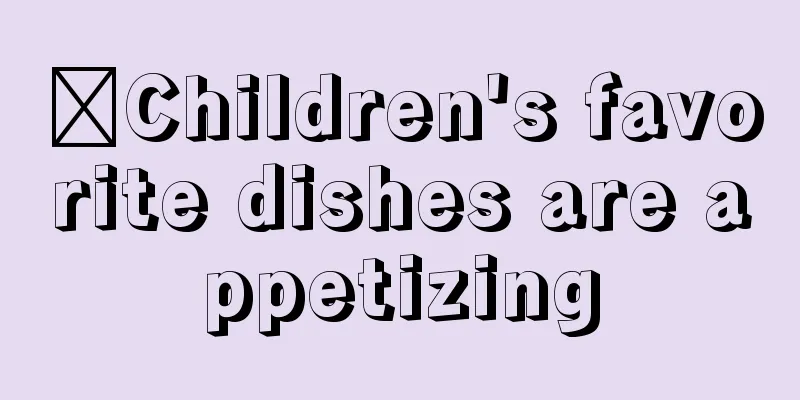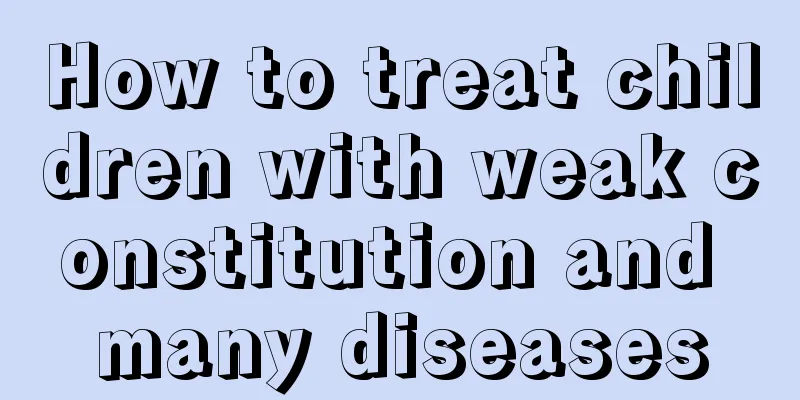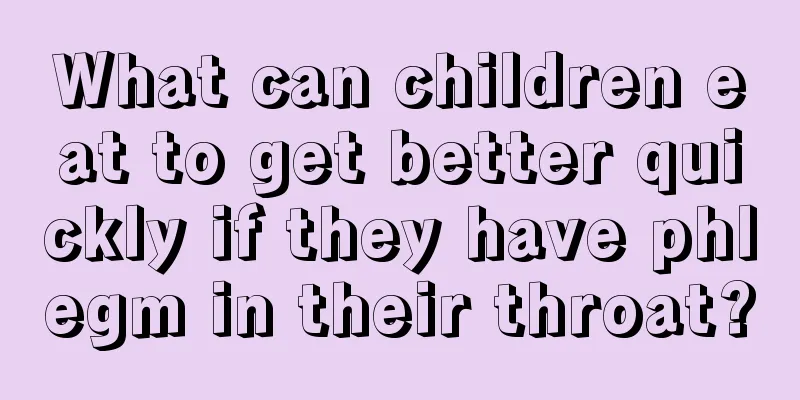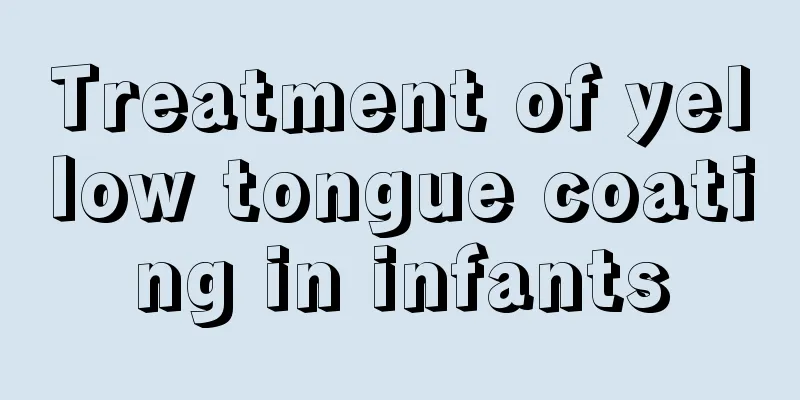Vertigo in children
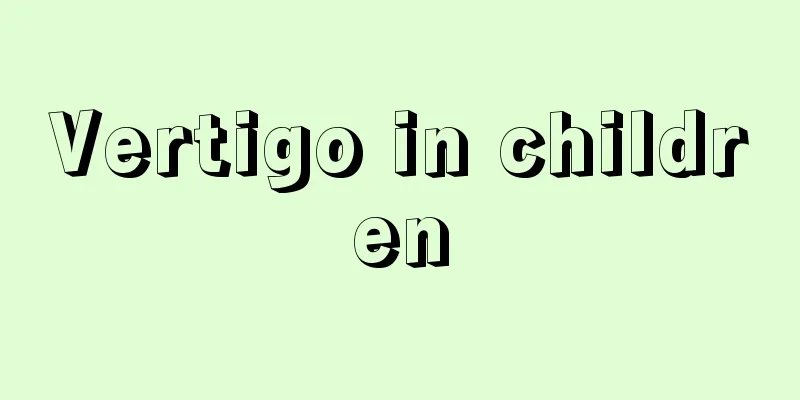
|
Vertigo in children is mainly caused by illness, especially symptoms of cold and fever, which can cause children to become weak and dizzy. Patients need to pay attention to the care of vertigo in children in their daily lives. Children with vertigo need to be taken to the hospital for a full-body examination, which can help us determine whether the child has a neurological disease or anemia. Dizziness or vertigo is also common in children. A systematic and comprehensive neurological examination must be performed. When neurological diseases are ruled out, it is also necessary to determine whether the cause is vestibular. Migraine-related vertigo 1. Clinical manifestations: Children's migraine headaches are usually limited to the forehead or periorbital area. The pain usually lasts less than 2 hours, and the nature of the pain is generally not the throbbing pain common in adults. Vertigo can manifest in two forms in migraine: one in which headache and vertigo exist at the same time, and the other in which vertigo is the only manifestation of migraine. When children with migraine experience vertigo or dizziness, the headache symptoms often ease, and some even only experience simple vertigo or dizziness without headache symptoms. . 2. Mechanism: 20% of children with migraine experience symptoms of dizziness or vertigo. The possible mechanism is the asymmetric stimulation of the bilateral brainstem vestibular nuclei or the lack of Ca2+ channels shared by the brain tissue and the inner ear. 3. Diagnostic criteria: Confirmed migraine-related vertigo: ① Moderate or severe recurrent vestibular symptoms ②Meet the diagnostic criteria for migraine of the International Headache Society (IHS) ③ At least one of the following migraine symptoms was present during at least 2 episodes of vertigo: Migraine-like headache, photophobia, phonophobia, visual or other auras will meet the IHS diagnostic criteria for migraine; Migraine symptoms occurred during at least 2 episodes of vertigo; More than 50% of vertigo attacks are preceded by migraine triggers: food triggers, irregular sleep, hormone changes; More than 50% of vertigo attacks respond to migraine medications. ④Exclude other causes. Vestibular function testing can provide valuable information for differential diagnosis in children with migraine, especially those with concurrent dizziness or vertigo. Caloric testing can reveal vestibular dysfunction, including spontaneous nystagmus, head-shaking nystagmus, vibration-induced nystagmus, and absence of vestibular-evoked myogenic potentials. Benign paroxysmal vertigo in children 1. Clinical manifestations: Sudden rotational vertigo, lasting from seconds to minutes, and inability to stand alone during an attack. Other symptoms may also occur, such as nystagmus, pale face, dizziness, tinnitus, sweating, nausea and vomiting, etc., which can be completely restored to normal after the attack. Older children may describe the feeling of spinning. The first attack of benign paroxysmal vertigo is common in children under 4 years old and is less common after 8 years of age. 2. Mechanism: It is currently believed that its occurrence mechanism is related to blood vessels. Paroxysmal vasospasm can lead to inner ear ischemia, resulting in organ dysfunction and vertigo; its central mechanism is related to the interruption of blood flow to the vestibular nerve nucleus. 3. Diagnosis: At least 3 brief episodes with a sense of rotation. Some children feel that they are rotating, while others feel that the surrounding environment is rotating, which seriously affects normal activities, but is not accompanied by loss of consciousness or any neurological hearing impairment. Vestibular function tests can show a variety of manifestations, so the current diagnosis mainly relies on clinical manifestations and characteristics. Vestibular neuronitis 1. Clinical manifestations: It is not common in children and manifests as sudden onset of true vertigo accompanied by vomiting, which lasts for several days to weeks. Vertigo and spontaneous nystagmus are its main clinical manifestations. 2. Mechanism: Vestibular neuronitis may be caused by viral infection, or by bacteria or other pathogens, causing neuroinflammation and damage to nerve cells. 3. Diagnosis: The detection coil head pulse test and hot and cold temperature test can show partial or complete loss of unilateral peripheral vestibular function, which can be used for early diagnosis of vestibular neuronitis. Chronic vestibular neuronitis can only be diagnosed using a probe coil head pulse test. Otitis media-related dizziness 1. Clinical manifestations: often manifested as dizziness or imbalance rather than vertigo. 2. Mechanism: The possible mechanism causing dizziness is that inflammation in the middle ear spreads to the inner ear, causing labyrinthitis, or that changes in pressure in the middle ear lead to changes in the labyrinthine pressure in the inner ear. 3. Diagnosis: There is otitis media, the latency of vestibular evoked myogenic potential is significantly prolonged, the vestibular function of the affected side is impaired, and other causes of dizziness or vertigo are excluded. trauma 1. Clinical manifestations: Dizziness or vertigo is one of the common symptoms after craniocerebral trauma. Children may experience severe vertigo attacks accompanied by nystagmus, nausea, vomiting, etc. If accompanied by hearing loss, it indicates the possibility of perilymphatic leak, which requires surgical repair. 2. Mechanism: It may be due to craniocerebral trauma that affects the labyrinth or vestibular nerves, causing dizziness or vertigo. 3. Diagnosis: Children with a history of trauma usually need to complete a hearing test. If hearing loss is present, further quantitative vestibular function testing is required, especially since sensorineural hearing loss is the first symptom of temporal bone fracture or perilymph fistula. There are many causes of dizziness or vertigo in children. If you want to make a clear diagnosis, you must collect a complete medical history and conduct a systematic and comprehensive neurological physical examination and ear examination to determine whether it is of vestibular origin. If neurological diseases are ruled out, a quantitative vestibular function test is required to determine whether it is peripheral vestibular dysfunction or central vestibular dysfunction. |
<<: Children catch cold and have diarrhea
>>: Child vomiting and diarrhea
Recommend
What are the recipes for babies with zinc deficiency?
It is a common phenomenon that babies lack zinc. ...
What massage methods can relieve baby's fever?
If the baby has a fever, I think as a parent, we ...
What should I do if my child’s eardrum is perforated?
What people usually call eardrum perforation is w...
What should I do if my child has congenital finger deformities?
Fingers are an essential part of the human body t...
The best age for children to take growth hormone
It is best to give children growth hormone inject...
What are the daily care for children with tonsillitis?
Tonsillitis is a common upper respiratory tract i...
What are the benefits of eating pig brains for children
Pig brain is rich in calcium and various vitamins...
How to improve children's memory?
Every parent hopes that their children can grow u...
What are the symptoms of urethritis in children?
Urethritis is a common disease of the urinary sys...
How old does a child need to be to stop drinking milk powder?
Breastfeeding has many benefits for children, bec...
What is the reason for a child's persistent high fever?
When a child is found to have a high fever, appro...
What should I pay attention to after the surgery?
Infants are more prone to hernia. For some childr...
Can a six-month-old baby with eye mucus be given an anti-inflammatory injection?
Eye mucus is quite common in our lives, especiall...
The dangers of children taking birth control pills by mistake
Contraceptive pills are a common contraceptive me...
What medicine should children take to reduce internal heat? These prescriptions are invaluable!
The problem of children getting angry needs to at...
